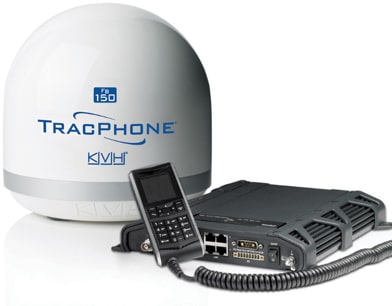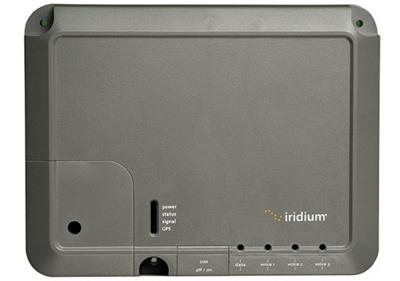
Satellite Communications
I write this article from the atolls of the Tuamotu Archipelago, east of Tahiti.
We had followed our dreams from Newport, Rhode Island, to Cartagena, Colombia, via the infamous Windward Passage on Visions of Johanna, our 62-foot custom Morris sloop. After cruising the San Blas Islands off Panama, we transited the Panama Canal, explored Ecuador and the Galápagos Islands, and began our Pacific crossing toward New Zealand. We cruised to French Polynesia, and the Gambier Islands via Easter Island and Pitcairn Island of Mutiny on the Bounty fame.
We liked the idea of an always-on voice and data connection and the option of web browsing in a pinch, because we wanted to be able to stay in reasonably close touch with family and friends on our yearlong plus voyage, and contact is a two-way street. We also calculated that standard Iridium usage ends up costing more than $100 per megabyte (MB) due to the very slow speed and per-minute pricing. We purchased an Iridium OpenPort system (www.iridiumopenport.com) prior to departure and agreed to evaluate and compare it with a KVH TracPhone Fleet Broadband 150 (FB150) system (www.kvh.com). Our SatCom systems have been our primary link to family and friends, our source for important weather information, and our connection to mechanics and technicians while in places without local help. During our cruise we have performed extensive comparative testing of the two systems.
The Iridium OpenPort and KVH Fleet Broadband 150 hardware packages both include an antenna dome that connects via a single power and signal cable to a belowdeck unit (BDU) with connections for power, data, and voice. The Iridium OpenPort antenna is a 22-inch-diameter by 9-inch-tall solid-state unit, while the KVH FB150 uses a 13.5-inch-diameter by 13-inch-tall stabilized antenna. Both would make reasonable installations on most sailboats over 40 feet and powerboats over 30 feet.
Both systems have voice quality similar to a cell phone, though OpenPort seems to suffer from echos, delays, and dropped calls on rare occasions. These are corrected by hanging up and redialing. Our FB150 has not experienced those problems. The OpenPort BDU includes three phone jacks and has three phone numbers available for incoming calls, while the FB150 includes a very nice Internet protocol (IP) telephone and easily integrates additional handsets or can connect with a normal analog phone jack.
While anchored at Isabella Island in the Galápagos, we had propeller problems and would have had to sail 700 miles upwind to the nearest Travelift. We were able to have daily phone calls and e-mails with the manufacturer in England to help us remove, take apart, inspect, and replace a defective hub in the water. Without this remote assistance, we probably would have had to alter our entire cruise itinerary to make a trip back to a boatyard and civilization.
The real reason to choose one of these new broadband satellite systems is to have an always-on data connection. While the OpenPort system is capable of speeds up to 128 kilobytes per second (KBps) our system is limited to 32 KBps due to the service plan we chose. At 32 KBps the cost of an OpenPort connection is similar to the FB150 at 150 KBps.

Since cost has been a major factor for cruisers deciding if they will carry satellite communications, we’ll get right to it. The Iridium OpenPort system retails for $5,800 and has a street price of about $4,800 while the KVH Fleet Broadband 150 retails for $7,500 with a street price of about $6,200, making a real-world price difference of $1,400 for the hardware.
The typical published OpenPort fee schedule is billed at $1.14 per minute voice and $21.95 per MB of data, with fairly sharp discounts available for large usage commitments, which also varies greatly by airtime supplier. We found an early-user package supplying 100 minutes of voice per month for $73 with no other commitments. Extra voice minutes are billed at $0.73/ minute and data is billed at $13.50 per MB on an à la carte basis, limited to the 32 KBps speed already mentioned. Data usage is rounded to the next 0.01 MB, a reasonable increment even if you shut down the whole system regularly.
Fleet Broadband service is available on an à la carte cost of $1.49 per minute for voice calls to land lines and $1.89 per minute to cell phones, and $13.50 per MB for data. Discounts are also available for committed usage. Conveniently, if you sign up for 12 months at a time, you can use your credit at any time during the year. So if you only use your boat for part of the year, or are planning to spend a month in a place with WiFi, you can bank time and use it throughout the year. A basic plan called a season pass costs $59 per month for any combination of 5 MB of data or 50 minutes of voice service each month at rates of $11.85 per MB data or $1.19 per minute voice. Overages are billed at those same rates, but data usage is rounded to the next 0.1 MB per connection. Take note: That’s 10 times the OpenPort rounding figure, which means that if you don’t want to leave the unit on and connected all the time, you will see a significant increase in actual cost due to rounding up each time.
We felt that the cost of increasing OpenPort to 128 kilobytes per second—$ 400 per month with much larger plan commitments as well—is too high to make it justifiable unless one is using huge amounts of data each month. Both systems exceeded their rated download speeds in our usage with the OpenPort maxing out at 33 KBps and the FB150 at 160 KBps. Upload speeds are much more similar at 25 KBps and 39 KBps respectively. In more practical terms, the FB150 downloads our daily e-mails in about 30 seconds while the OpenPort takes two minutes.
For browsing the Internet, the Open- Port feels like a good dial-up connection, while the FB150 simulates a public WiFi hotspot. Depending on how you look at it, web surfing was a rare treat and an easy way to break our budget— we figure that loading a single web page might cost $10 to $20, depending on content. Still, on our way from Easter to Pitcairn, our gooseneck, the fitting that attaches the boom to the mast, stripped its bolts, disabling our mainsail. From the middle of the Pacific Ocean we were able to order larger bolts, drill bits, and taps from McMaster Carr and arrange to have them shipped to a friend traveling to Tahiti. The parts were waiting for us when we arrived in French Polynesia. That web surfing paid dividends in keeping us on course.
The OpenPort by Iridium and Trac-Phone Fleet Broadband 150 by KVH both meet their promises of data and voice connectivity for a reasonable cost within a small package. Because each works in remote areas and offers the expandability to meet yachtsmen’s varying needs, both will find satisfied customers.









